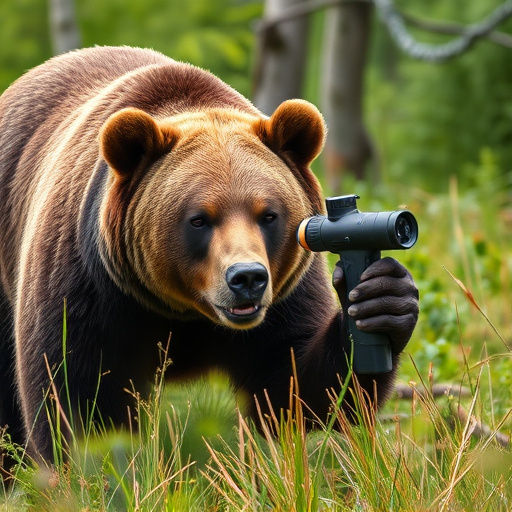When exploring Alaska's wilderness, maintain a safe distance of 20-30 feet (6-9 meters) from bears to maximize the effectiveness of bear spray. Aim directly at the bear's face and eyes for optimal disruption. Proper usage techniques are crucial, but remember that bear spray deters rather than guarantees protection. Additionally, take preventative measures like maintaining distance, keeping camps clean, securely storing food, and making noise in bear habitats to avoid encounters.
Navigating Alaska’s wilderness requires a deep understanding of bear repellent effectiveness, particularly the optimal range for bear spray. This article delves into the science behind bear spray range, exploring factors like wind, terrain, and bear behavior that affect its performance. We’ll uncover the best distance for maximum efficacy, provide tips for proper use, and emphasize safety precautions, equipping folks to protect themselves in Alaska’s diverse landscape.
- Understanding Bear Spray Range and Factors Affecting Effectiveness
- Optimal Distance for Maximum Bear Repellent Performance
- Tips for Effective Use and Safety Precautions
Understanding Bear Spray Range and Factors Affecting Effectiveness
Understanding the effective range of bear spray is crucial when venturing into Alaska’s wilderness. The best distance for bear spray effectiveness varies depending on several factors. Generally, it’s recommended to aim for a range of 20-30 feet (6-9 meters), which is considered the optimal zone for deterring bears. However, this can be influenced by several variables, including weather conditions and the bear’s behavior.
On a clear day with calm winds, the spray’s reach can extend further, but in humid or windy environments, the range may be significantly reduced. Additionally, the angle and pressure applied during the spray can impact its effectiveness. Proper usage involves aiming directly at the bear’s face and eyes to ensure maximum disruption of their senses, which is why knowing the best distance for each specific situation is key when relying on bear spray as a deterrent in Alaska.
Optimal Distance for Maximum Bear Repellent Performance
The optimal distance for maximum bear repellent performance, such as that achieved by guard Alaska bear repellents, varies depending on several factors. Studies suggest that spraying directly into an approaching bear’s face and eyes can be incredibly effective in deterring aggressive behavior. This typically involves a range of around 20-30 feet (6-9 meters). However, the effectiveness decreases significantly beyond this distance.
To ensure the best results, it’s crucial to understand that spray patterns and wind conditions play major roles. Using guard Alaska bear repellent at an angle to cover both the bear’s face and body can maximize its reach. Maintaining a safe distance of 50-70 feet (15-21 meters) from bears you encounter in the wild is generally recommended, allowing for ample time to deploy your repellent effectively if needed.
Tips for Effective Use and Safety Precautions
When using bear repellent, understanding the best distance for its effectiveness is key to ensuring your safety in grizzly country. The recommended range for bear spray is approximately 20-30 feet (6-9 meters), though this can vary based on factors like wind and the specific product. To maximize its impact, aim for the face, eyes, and nose of any approaching bear, as these are sensitive areas. Remember, bear spray is a tool to deter an attack, not guarantee complete protection.
Safety precautions extend beyond proper usage. Keep your distance from bears at all times, maintain a clean camp, and store food securely. Make noise when hiking in known bear habitats to avoid unexpected encounters. Bear repellent should be a last resort; preventing encounters through awareness and preparedness is always the best strategy.
Determining the maximum range of a bear repellent, like Guard Alaska, is key to ensuring your safety in grizzly country. While the best distance for bear spray effectiveness varies based on factors like wind and terrain, understanding these variables equips outdoor enthusiasts with crucial knowledge. By adhering to safety precautions and employing effective use techniques, individuals can significantly reduce risks during encounters with bears. Remember, knowing the optimal distance for maximum performance can be a game-changer when navigating Alaska’s wild landscapes.
